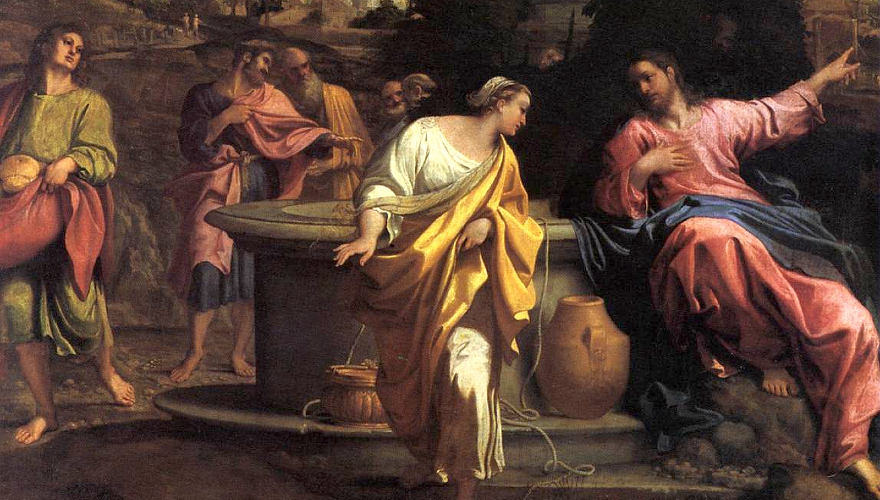Whether we’re working creatively, or teaching the kids we love about creating, it’s easy to be haunted by a desire for originality. Nobody wants to hear, “You just copied!”
But as people of the Book, we’re uniquely free from the demands of novelty. We know we don’t work in a vacuum. Only God creates from nothing, so we are free to borrow and build from the beauty we see around us. More than that—if we humbly accept that our role is to reflect light, not to create it, then we become more truthful messengers of beauty.
Think about it this way: the worst, least original music you ever heard probably came from a band that claimed to sound like nothing else. But The Beatles’ debt to Elvis (who borrowed heavily from gospel music) is clear, yet their impact on modern music is unsurpassed.
Christians also have a unique opportunity to see human creativity at its un-corrupted best—in the life of Jesus. His creativity is the best reason for ours!
For example: When challenged by the woman at the well, he told her he could give her “living water.” What a metaphor! The object lesson is right beside them, it’s simple, and the more you think about it, the better the analogy works. Go Jesus, right?
But here’s the thing: Jesus didn’t come up with that concept on the spot. As a first-century Jew, he would have been familiar with Jeremiah 2:12-13:
Be appalled, O heavens, at this; be shocked, be utterly desolate, declares the Lord , for my people have committed two evils: they have forsaken me, the fountain of living waters, and hewed out cisterns for themselves, broken cisterns that can hold no water.”
No, Jesus exercised a different kind of creativity. Faced with a needy, but suspicious and intelligent, questioner, he took a word-picture from the prophetic writings and used it to communicate both the original message, and something specific – something new:
Original – God’s people were looking for love in all the wrong places.
Specific – She had five husbands and a boyfriend.
Original – God’s people turned to the worship of idols.
Specific – She, and all of Samaria, worshipped five gods in addition to YAHWEH.
Original – Only God could satisfy this thirst.
Specific & New – The man now speaking with her was God!
All of this, in a discussion started by the actual, physical cistern still sitting between them!
Jesus’s teaching was not drawn from a mysterious void. His imagination was heavily stocked with images from scripture, and from daily life. He later used two vernacular sayings just to help the disciples understand what went down at the well. And all through the gospels he tells them, “You have heard it said…”
So to be like Jesus, to help our children become like him, we should be free to throw ourselves into into story-reading, into Bible reading, and into history. Because these are the materials a holy imagination will reach back to, and use to build something good.
Christ and the Samaritan Woman or The Woman at the Well is a 1593-1594 oil on canvas painting by Annibale Carracci
- In Conversation With Michael J. Tinker: Getting to the Heart of the Gospel Through Song - January 31, 2024
- All Good Books Are Alike… - December 26, 2023
- Don’t Be Original - September 25, 2023

But here’s the thing: Jesus didn’t come up with that concept on the spot. As a first-century Jew, he would have been familiar with Jeremiah 2:12-13:
That’s really good stuff. Thanks.
Thanks, Mr. Smith. I’m glad it resonated.
Ooh. I’ve never heard this perspective on Jesus’ interaction with the woman at the well. Thanks, James!
You’re welcome, Helena. It was a fun discovery for me, too!